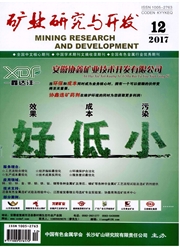

 中文摘要:
中文摘要:
循化-责德盆地位于青藏高原东北缘,晚新生代构造活动强烈,黄河水系流域剥蚀作用显著。通过提取统计残存的某关键时期的现今分布高程,结合“窗口法”和“顶面法”提取样本点数据,获取空间插值样本点并分析样本数据特征,利用数字高程模型(DEM)的空间分析技术,选择自然邻点插值法,最大程度地恢复了黄河水系侵蚀下切之前相应时期的古沉积顶面。利用晚新生代古沉积面与现代地形面进行差值数学运算,获取晚新生代以来各区域剥蚀量或剥蚀地形。研究表明剥蚀量的分布形态与青藏高原东北缘盆山地貌形态有一定的相关性,盆地区域的剥蚀量相对较大,最后得到研究区晚更新世以来平均剥蚀速率达到约0.029mm/a。
 英文摘要:
英文摘要:
Xunhua -Guide basin is at the northeastern margin of Qinghai - Tibet Plateau. In this area,late cenozoic tectonic activ- ity was intensity, and the denudation in Yellow River basin was significantly. This paper tried its best to reconstruct paleosurface during the corresponding period using digital elevation model (DEM) ,by extracting the distribution of residual elevation in a critical period to obtain the sample interpolation using "window method" and "top surface method". Interpolation between adja- cent inputting data points was completed using a nearest - neigh- bor triangulation algorithm to create the reconstructed basin fill. The distribution and magnitude of late cenozoic regional incision were calculated by subtracting the modem elevation from the ele- vation of the reconstructed basin fill surface. The results showthat there is a certain correlation between the distribution pattern of denudation and the basin topographic morphology in the north- eastern margin of Qinghai - Tibet Plateau, and the basin denuda- tion is large, the average erosion rate is about 0.029 mm/a in the studied area after late Pleistocene Epoch.
 同期刊论文项目
同期刊论文项目
 同项目期刊论文
同项目期刊论文
 Migration of dynamic subsidence across the Late Cretaceous United States Western Interior Basin in r
Migration of dynamic subsidence across the Late Cretaceous United States Western Interior Basin in r Exhumation of the Huangling anticlinein the Three Gorges region:Cenozoic sedimentary record from the
Exhumation of the Huangling anticlinein the Three Gorges region:Cenozoic sedimentary record from the 期刊信息
期刊信息
